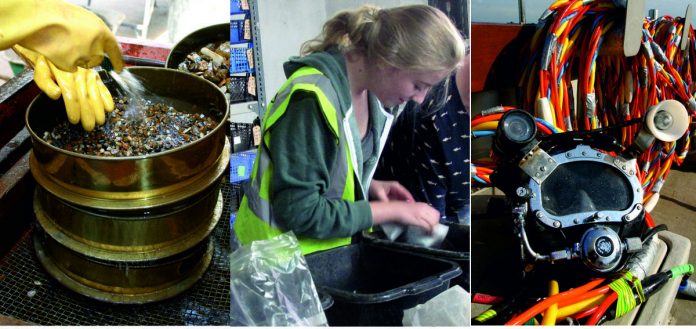Wessex Archaeology provide work experience posts for young archaeologists wanting to get a “taste” of commercial archaeology. Ella Regan was one such lucky individual, and she writes about her own experience during the week she spent with Wessex Archaeology ranging from environmental processing to site-work, finds and ceramic identification to photogrammetry – reminding us of the varied opportunities that present themselves to those wishing to follow a career in archaeology
This week (6/06/16–10/06/16) I have done work experience with Wessex Archaeology. The last five days have been filled with numerous activities from all over the different sections of archaeology; and not only have they given me a better idea of how in-depth archaeology is, they have also shown me how well linked to other professions being an archaeologist can be.
On the first day I was given a tour of the office, and immediately picked up on how important skills like teamwork and communication are in this career. Each section overlapped with the next, allowing them to continue, and expand their work until they had the full picture. Then, after lunch, I was introduced to Roberta and Damien, who work as the survey team, and make sure the correct recording equipment is available, and working, for each site. Roberta showed me how to use the GPS, and then we looked at AutoCAD and photogrammetry, both of which were amazing.
On the second day I had worked in the environmental section with Nicki in the morning, and I washed and filtered five different soil samples. I was covered in water, and mud, but learnt how different types of soil preserved artefacts and remains, and how even finds like microscopic snail shells could show them what the land was like. In the afternoon, I worked with Susan, who is the senior logistics officer. Her job is important as it allows all the sites to run smoothly. I was tasked with finding the dates for a three day first aid course, and for finding suitable accommodation for archaeologists on two sites. I never fully understood how much work goes into organising the sites, and the people working there.
On Wednesday I worked with the finds team, and the volunteer cleaning finds. The bulk of the artefacts I cleaned were Roman pottery, many pieces being black burnished ware which comes from around Poole. You could see the connection between some sherds, as they had the same pattern – a particularly common one being a lattice. There was also a lot of animal bones, and CBM, which is ceramic building material. My personal favourite was a curved handle, presumably from a tea cup, or teapot.
Day four bought me to my site visit, which was in the on the west side of Wiltshire. It was amazing to see how the sites work, and I got to see the specific conditions the finds from here had to be stored in. I spent the day helping the volunteers clean the finds, and was shown how different conditions affected, and marked the finds in different ways. Day four was probably my favourite day.
I have really enjoyed my week here at Wessex, and it has opened my eyes to how busy archaeology is. There is so much to still discover, and it has been amazing to see that.
On my fifth, and final, day I spent the morning with the environmental team again, this time with Ines. She showed me how they used the floating parts of samples, called the flots, to enhance their knowledge of the landscape. We looked at barley, and wheat grains, and how you could identify cereals because they have an embryo cavity, which is a small dent on one side where the embryo sits. She also showed me the outside of a sloe stone, and compared it to one that hadn’t been affected by heat and time. Then, in the afternoon, I was working with the marine team, and started off by re-wrapping some of the marine finds with Tom. They were all eventually being sent to a museum for display. After that, I helped Maddy wrap a new wire around the ‘umbilical’ so that when the team went diving next week the people on the boat could have a live stream of what the diver was seeing. Finally, Peta showed me some more photogrammetry, and allowed me to have a go creating a model of a shell that had been dredged up. After loading up the photos, we were left with a digital 3D model of the sides of the shell.
I have really enjoyed my week here at Wessex, and it has opened my eyes to how busy archaeology is. There is so much to still discover, and it has been amazing to see that.
By Ella Regan
Source: Wessex Archaeology


